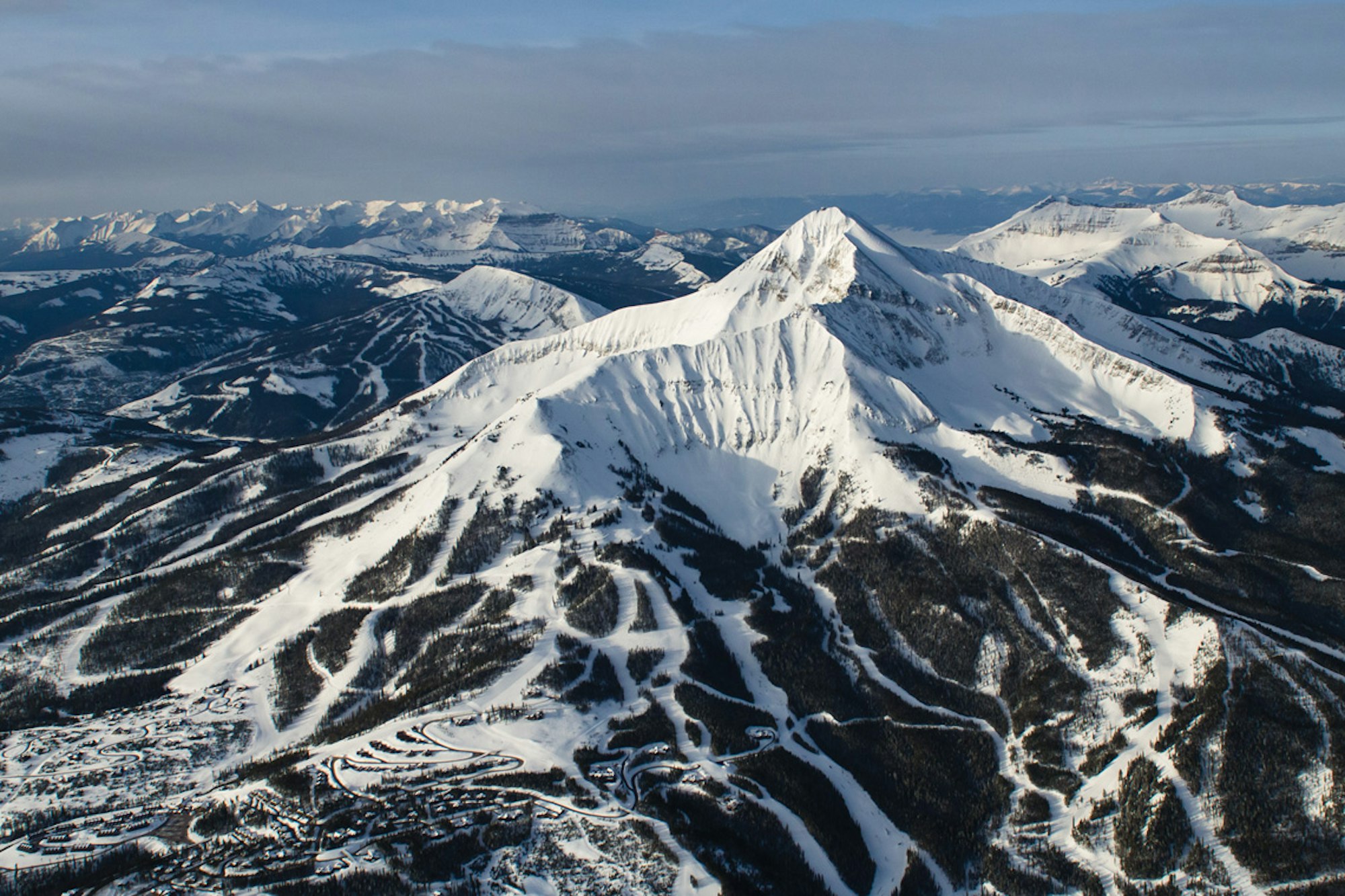

Montana is expansive and off the beaten path, and rewards any skier willing to slow down and take the road less traveled
WORDS • KARIN KIRK | PHOTOS • RYAN TURNER
For some, skiing is a collective sport, made all the richer by a community that shares the stoke. But others may covet a quieter experience that harkens back to skiing’s simpler origins. Just give me an off-the-beaten-path stash of fresh snow and some interesting terrain, and no matter what else might be going on in the world, life is suddenly perfect.
For those who seek to explore the soul of skiing, Montana is your place. It’s got the snow and topography that every skier craves, but it’s all spread out over an expansive area. Montana is the size of all the Northeastern states put together, but only if you count Massachusetts twice. With ski areas ranging from first-class to down-home, Montana’s big terrain and welcoming communities offer plenty of room for us all.
Big Sky Resort
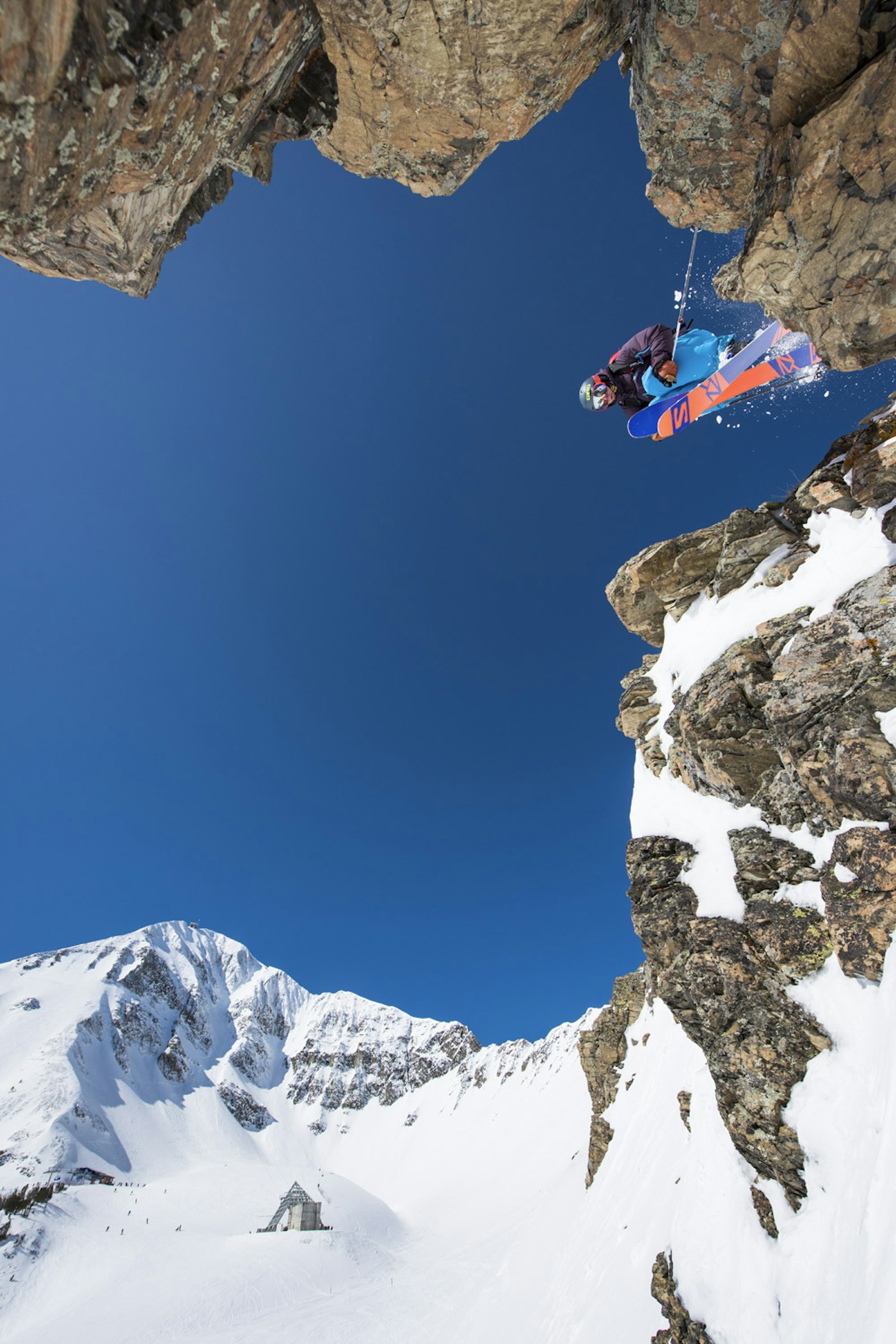
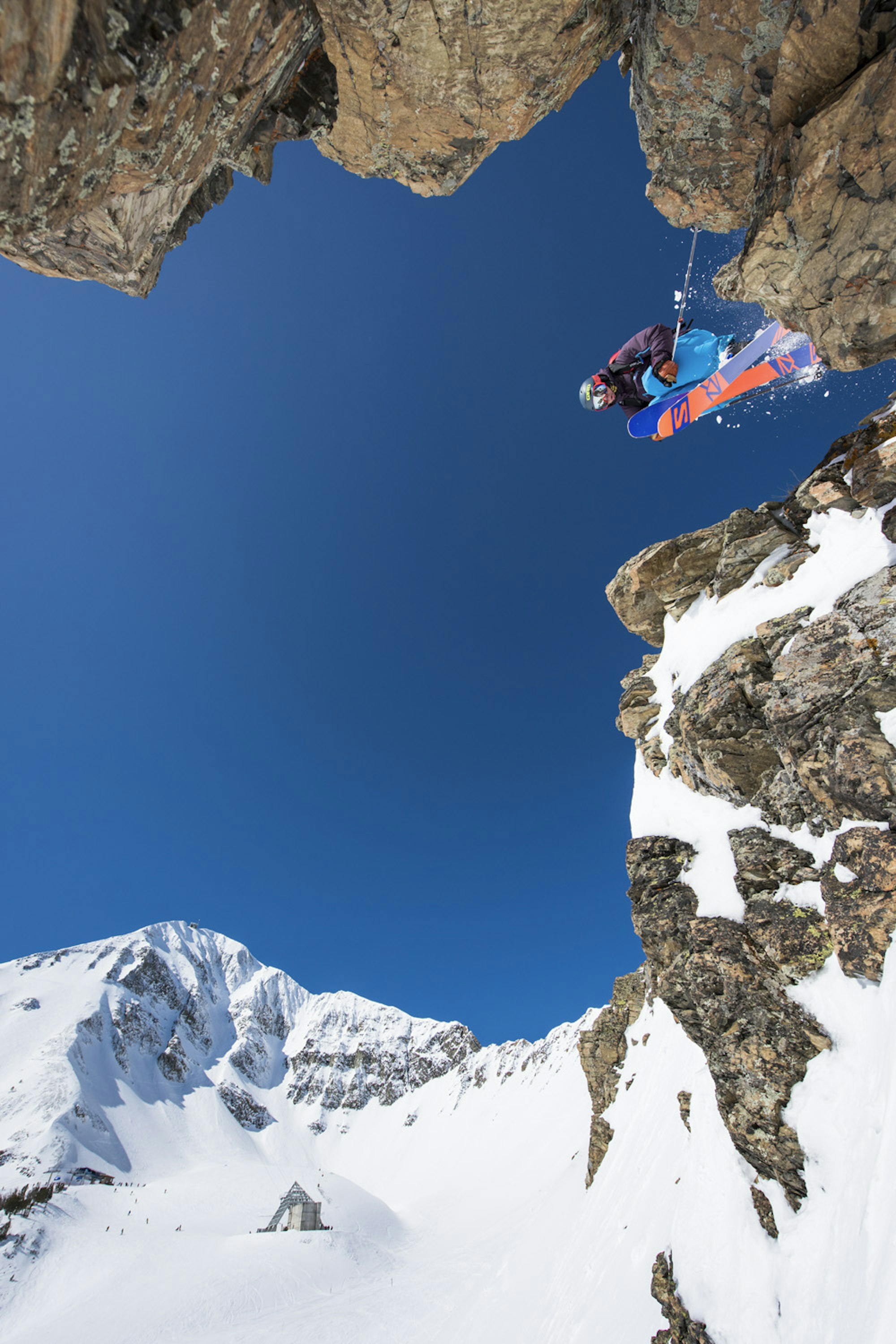
SKIER: Dave Stergar | LOCATION: Big Sky Resort
There’s one moment on the drive to Big Sky Resort where everyone stops talking, no matter how juicy the conversation. Turning uphill off Highway 191 reveals the first glimpse of Lone Peak, an aptly named pyramid of rock jutting above the landscape. Welcome to one of the most dramatic ski areas in the lower 48.
The allure of the peak is undeniable, as evidenced by the tractor-beam-like pull the Lone Peak Tram has on skiers at Big Sky. Lone Peak’s exposure, views and sheer size make it worth the time investment, even if for just one lap on the tram. “Just don’t cut the line,” jests Dave Gomez Johnson, Montana local and owner of CASA Tours, “or you’re really gonna get heckled.”
Fortunately, the vast majority of the mountain is lightly traveled. Head to the Challenger lift, and enjoy techy bowls, steep trees and quad-searing moguls. Hiking above Headwaters is a committing choice, with “steep, technical, couloir lines,” said Johnson, “but you have to be comfortable with exposure.”
Big Sky is vast and conditions vary, so ask around for suggestions, and ease into terrain rather than following locals and hoping for the best. When your legs have had enough, Big Sky’s two villages provide plenty of off-mountain options, but first, linger on the plaza at the base of Swift Current, ogle at that gorgeous peak and toast the day.
Bridger Bowl Ski Area
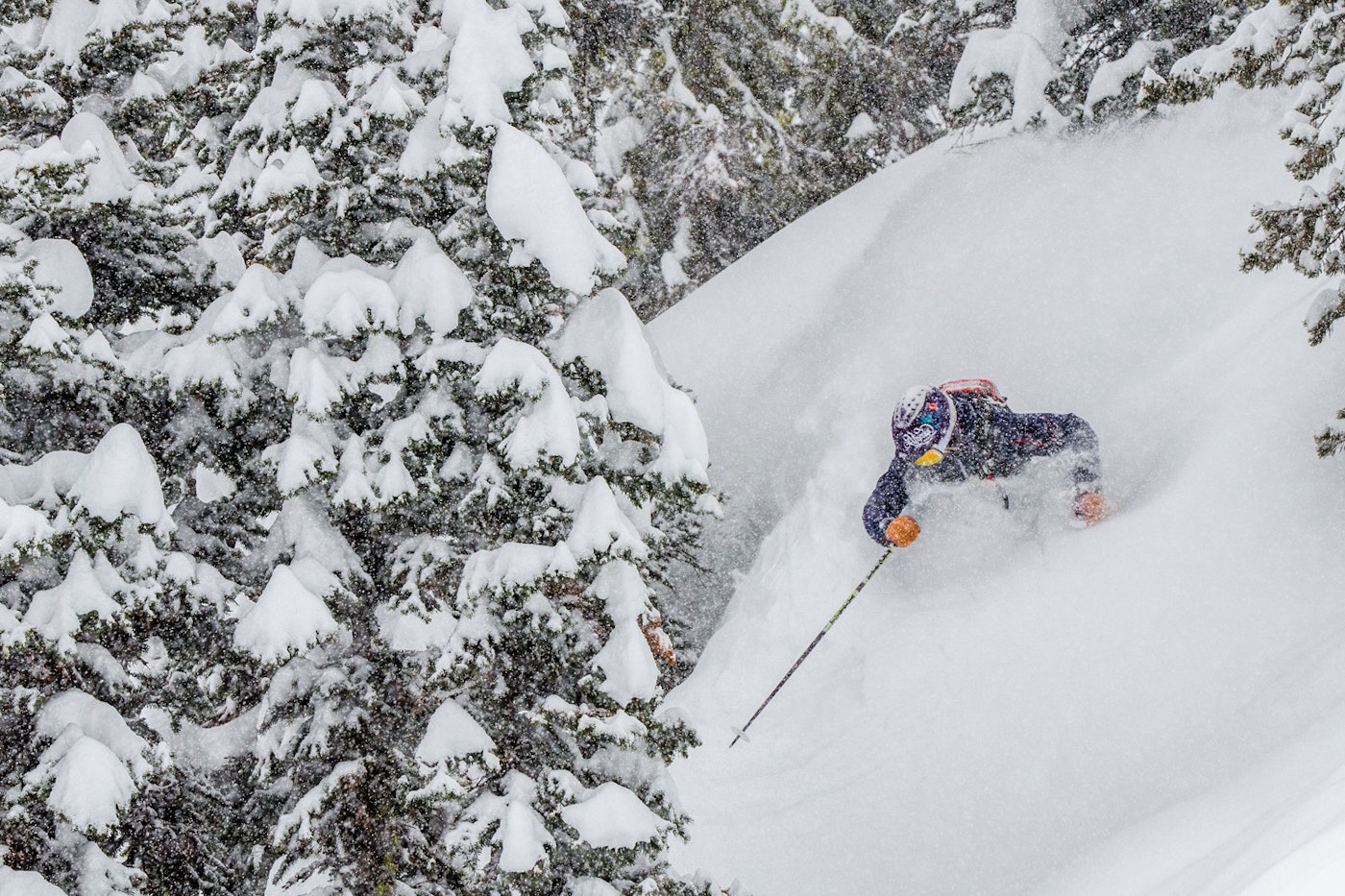
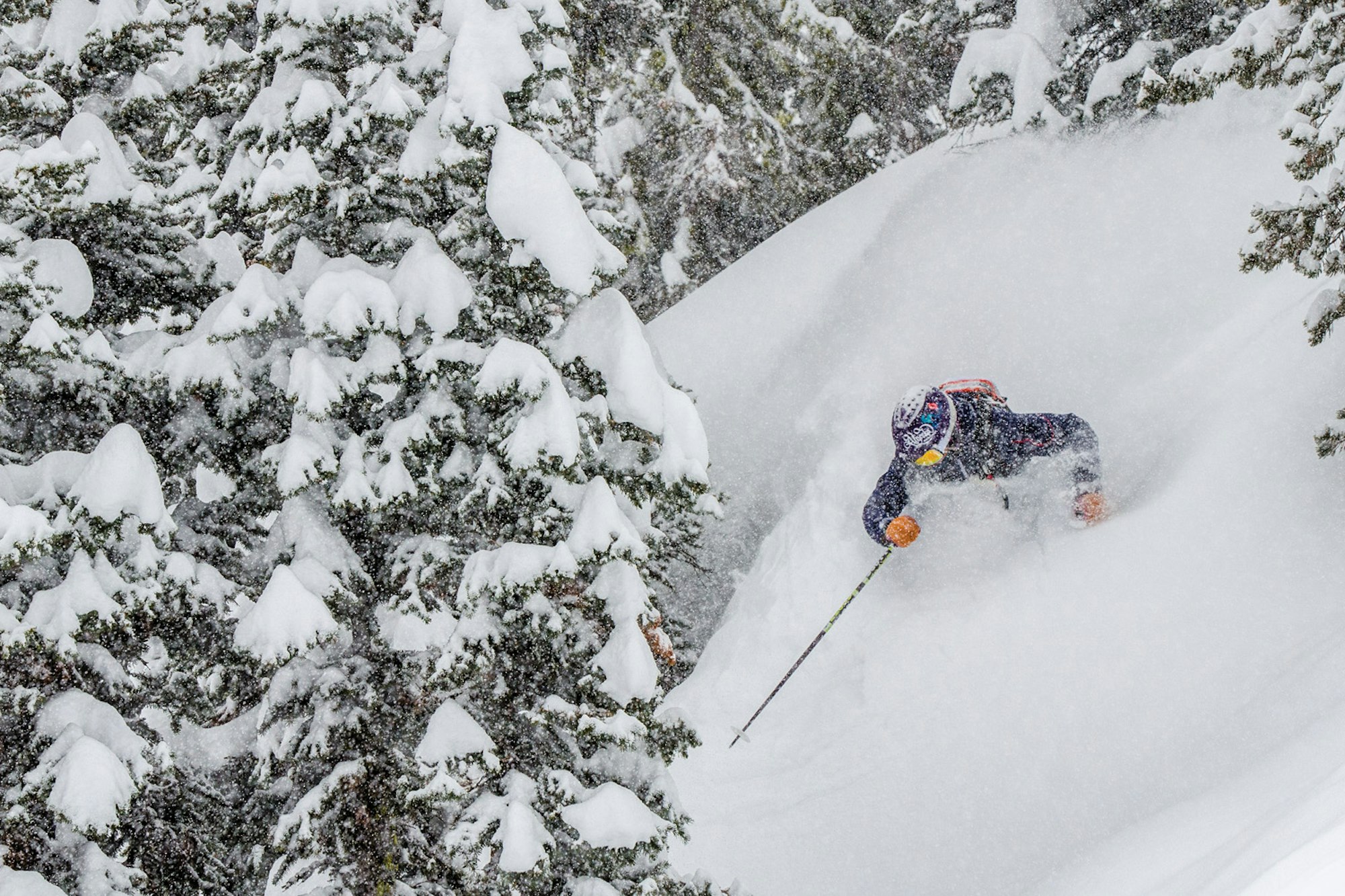
SKIER: Elyse Saugstad | LOCATION: Bridger Bowl
Bridger Bowl feels like the kind of place a skier would invent on a bar-napkin sketch. Start with world-class, technical terrain, then add reliable snow, plenty of elbow room and the most skilled, cheerful crew of locals you’re likely to find anywhere. If you desire high-speed lifts and slopeside shopping, look elsewhere, but if you crave heart-pumping adventure and a flavor of ski mountaineering, Bridger is for you.
The rowdiest terrain on the mountain is off the Schlasman’s lift and the hikeable areas above the Bridger and Pierre’s Knob lifts. Collectively, this is “Ridge terrain,” and an avalanche transceiver is required for accessing any of it. None of the runs in these zones are marked and require careful route-finding to ensure you maximize the fun and minimize the risk. Explore carefully, and ideally go with someone who knows the territory. Andy Copeland has been a guide on Bridger’s Ridge since the days of analog beacons– he’s seen it all and has apt advice for anyone visiting for the first time: “Go with someone who prioritizes your experience above their own,” he advises. Cope- land suggests starting off with the Fingers hike above the Pierre’s Knob lift, where “at every point, you have options, most of which are visible to you.” Another possibility is to hire a guide for a half-day and get ushered directly to the goods. Either way, skiing at Bridger will hone your skills in ways that most ski areas won’t.
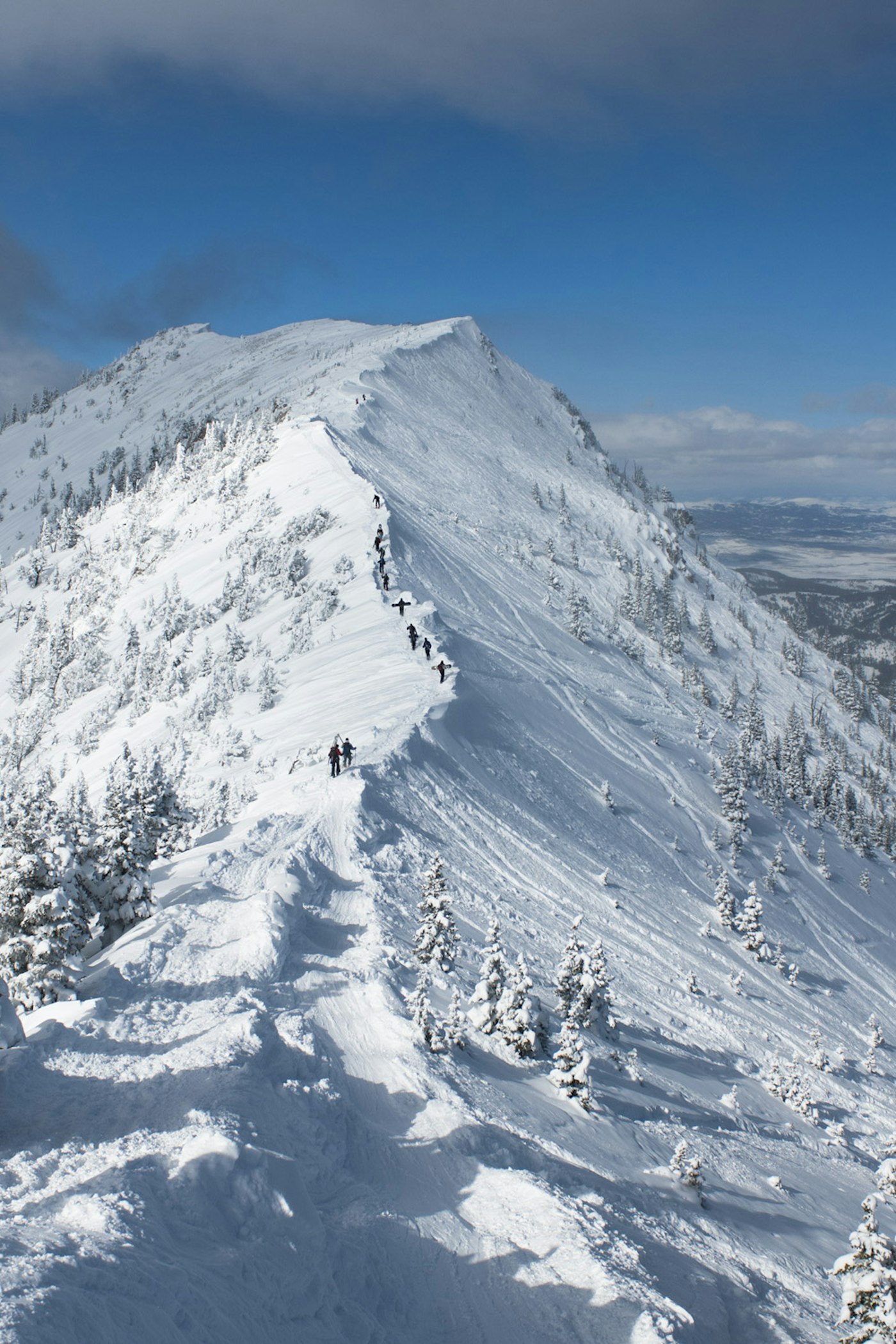
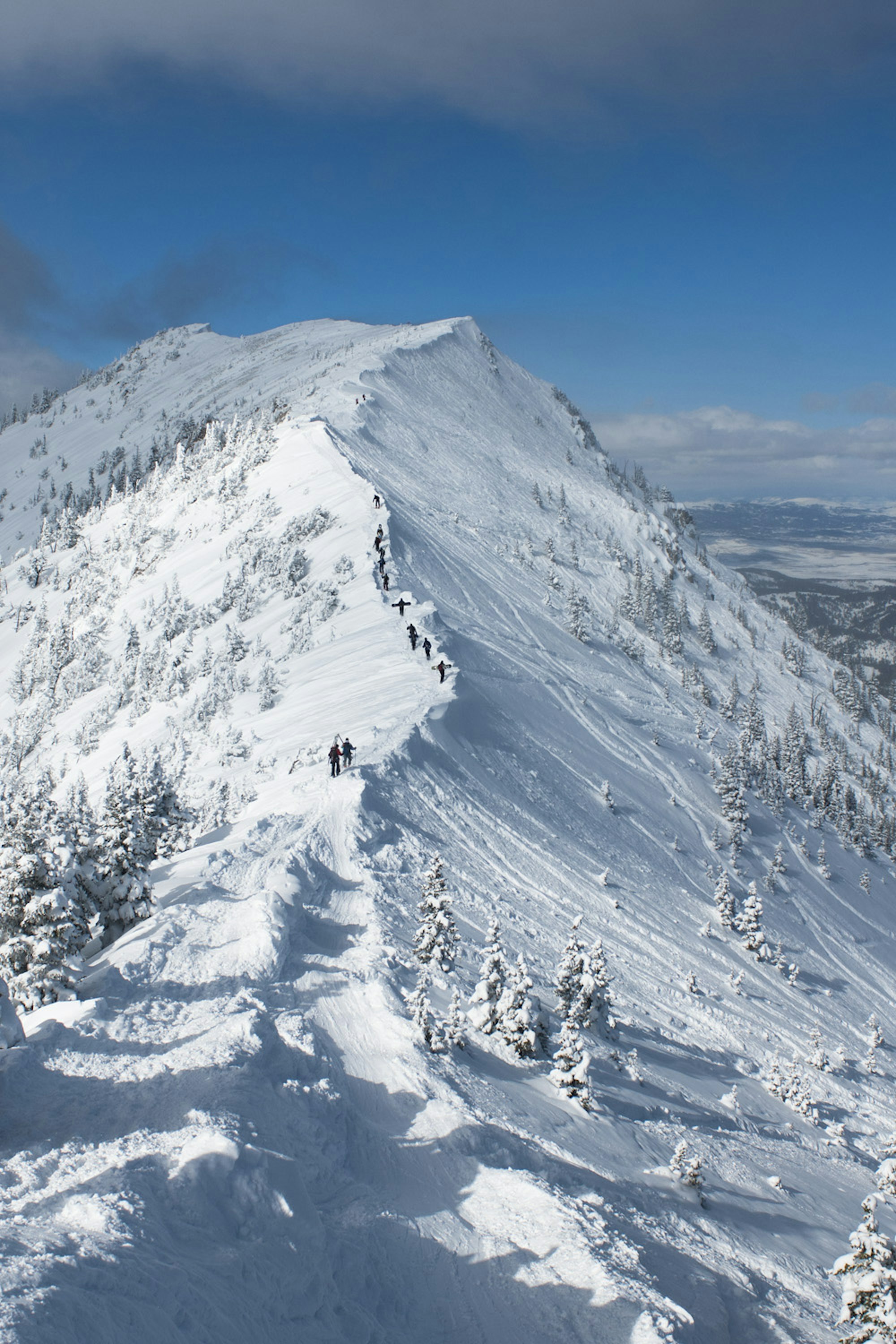
LOCATION: Bridger Bowl
Montana Snowbowl
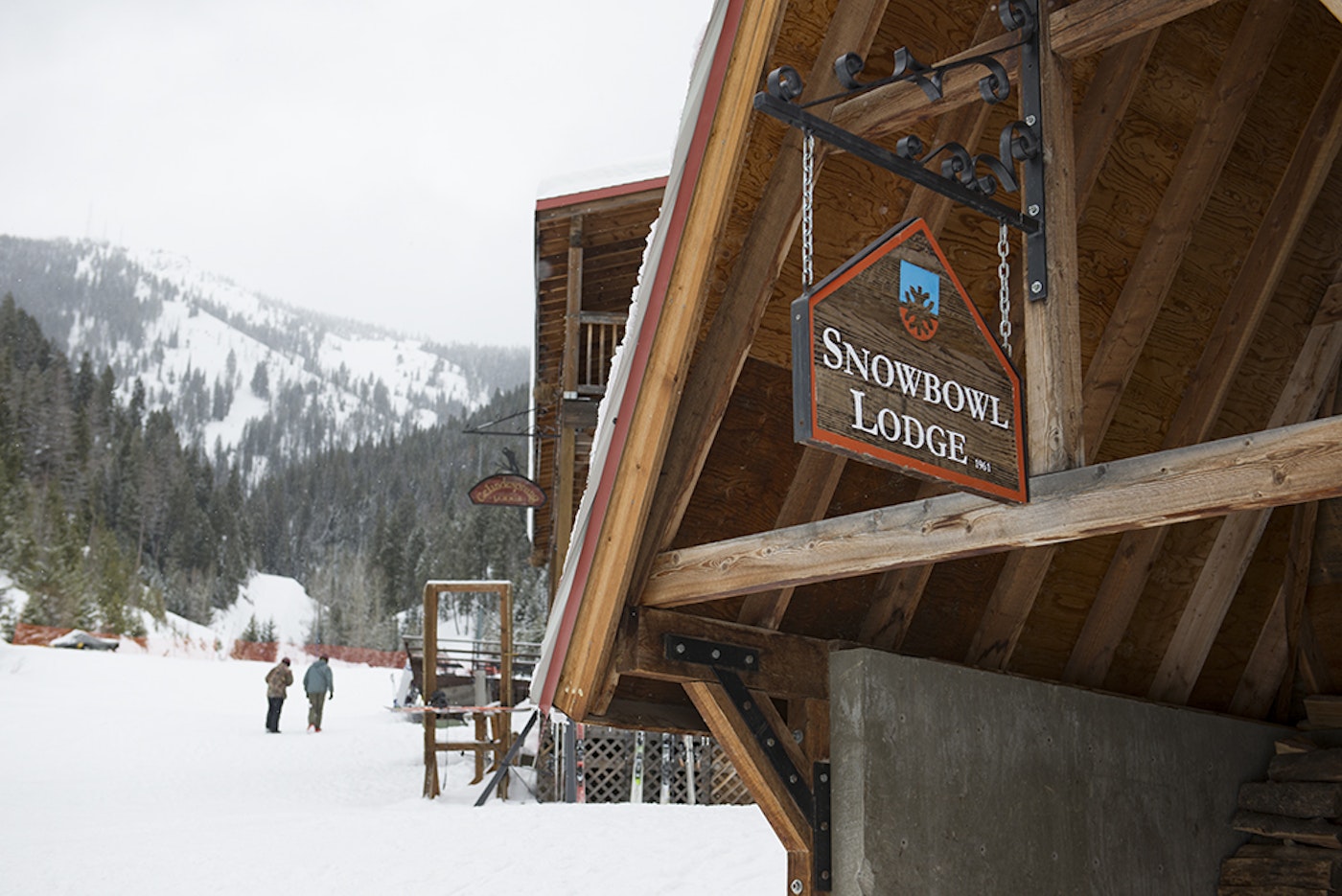
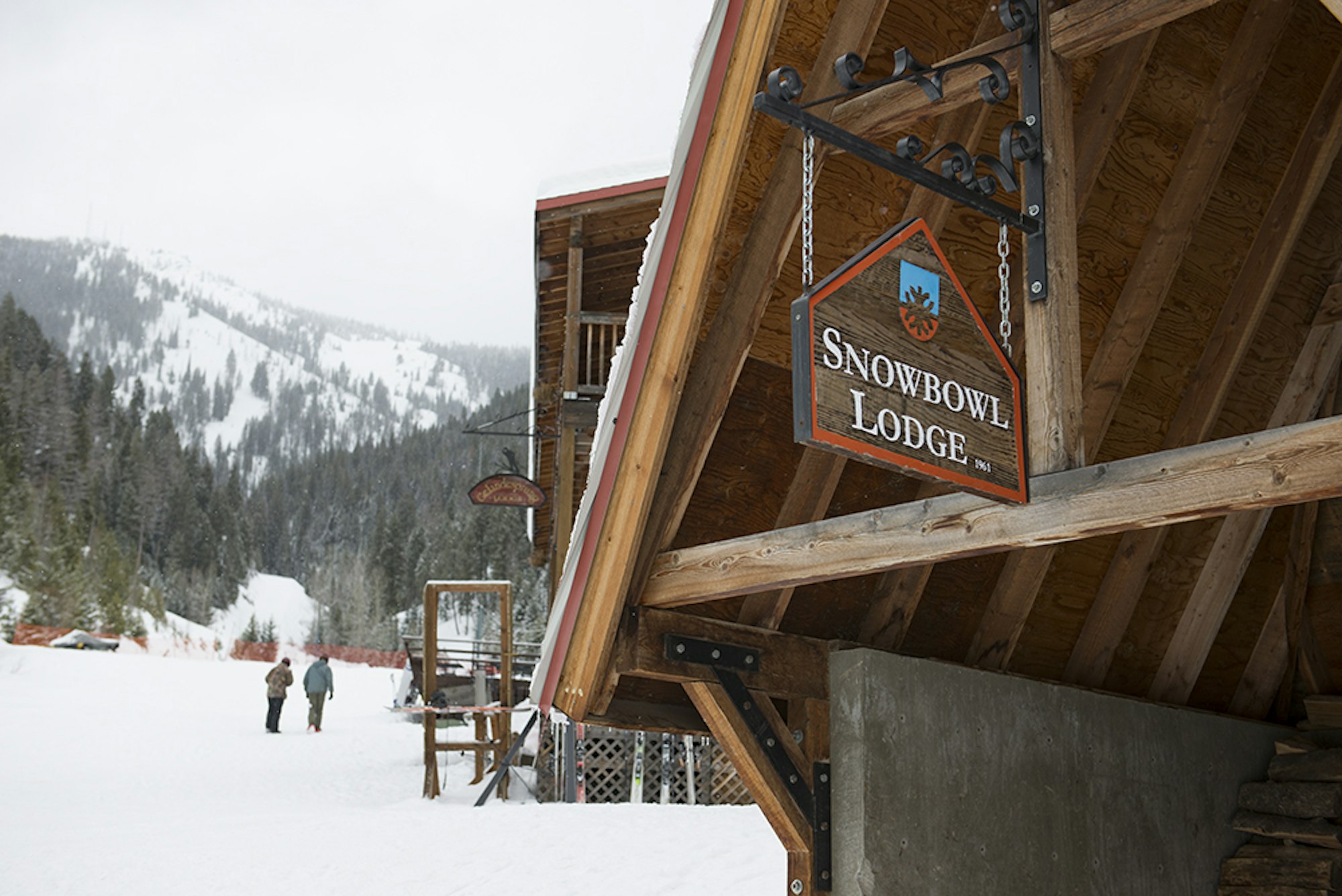
LOCATION: Montana Snowbowl
As skiers flock to Montana’s larger resorts, Montana Snowbowl remains lesser-known and fiercely loved by a tight-knit, genuinely friendly community. While protective of their slice of heaven and reluctant to praise the mountain on the record, Missoulians will welcome skiers eager to make the effort to explore Snowbowl with open arms. A local named Jim recalls his first powder day at Snowbowl: “I was like, my God, this place is legit.” The main attraction is the West Bowl, dropping 2,500 feet through open areas, light trees and natural features. The terrain rewards creativity. “It’s playful and fun,” he added.
Part of the appeal of Montana skiing is that it recalls skiing’s golden age, when all a ski area needed was a slow lift, parking lot and base lodge. The skiing took care of the rest. “Snowbowl was built in the ‘60s and still moves at that pace,” said Jim. Even on busier days, the varied landscape disperses skiers into nooks, crannies and natural gullies, encouraging a sense of solitude and exploration. While the ski experience is diverse, the meal choice is singular—you simply must indulge in Snowbowl’s legendary wood-fired pizza, baked with timber cleared from the ski runs.
There are two caveats for visitors: there is very little beginner terrain, and the road to the ski area is “a serious mountain climb,” according to the local. All the more reason that Snowbowl tends to keep to itself–but trust me, it’s worth the visit.
Red Lodge Mountain
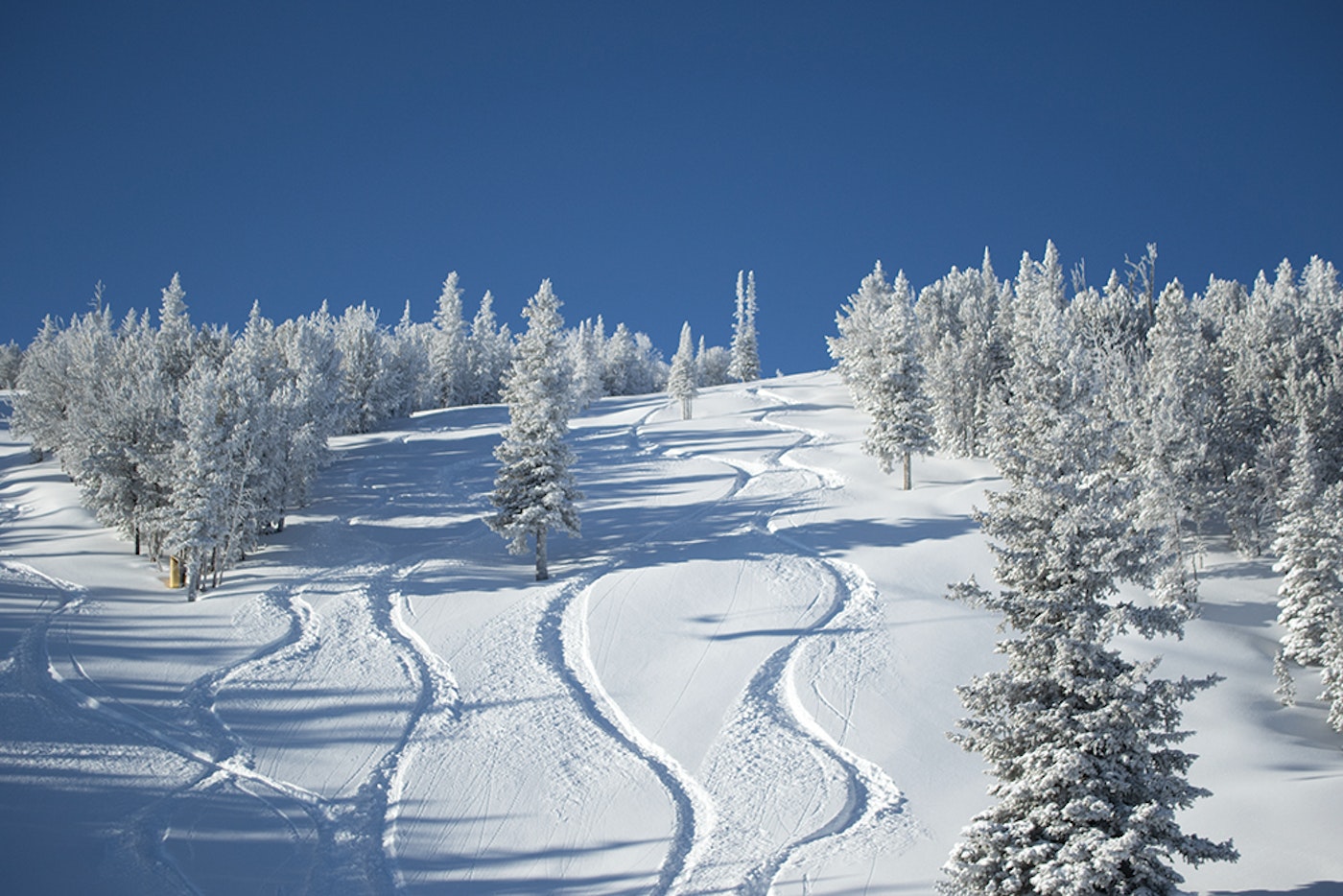
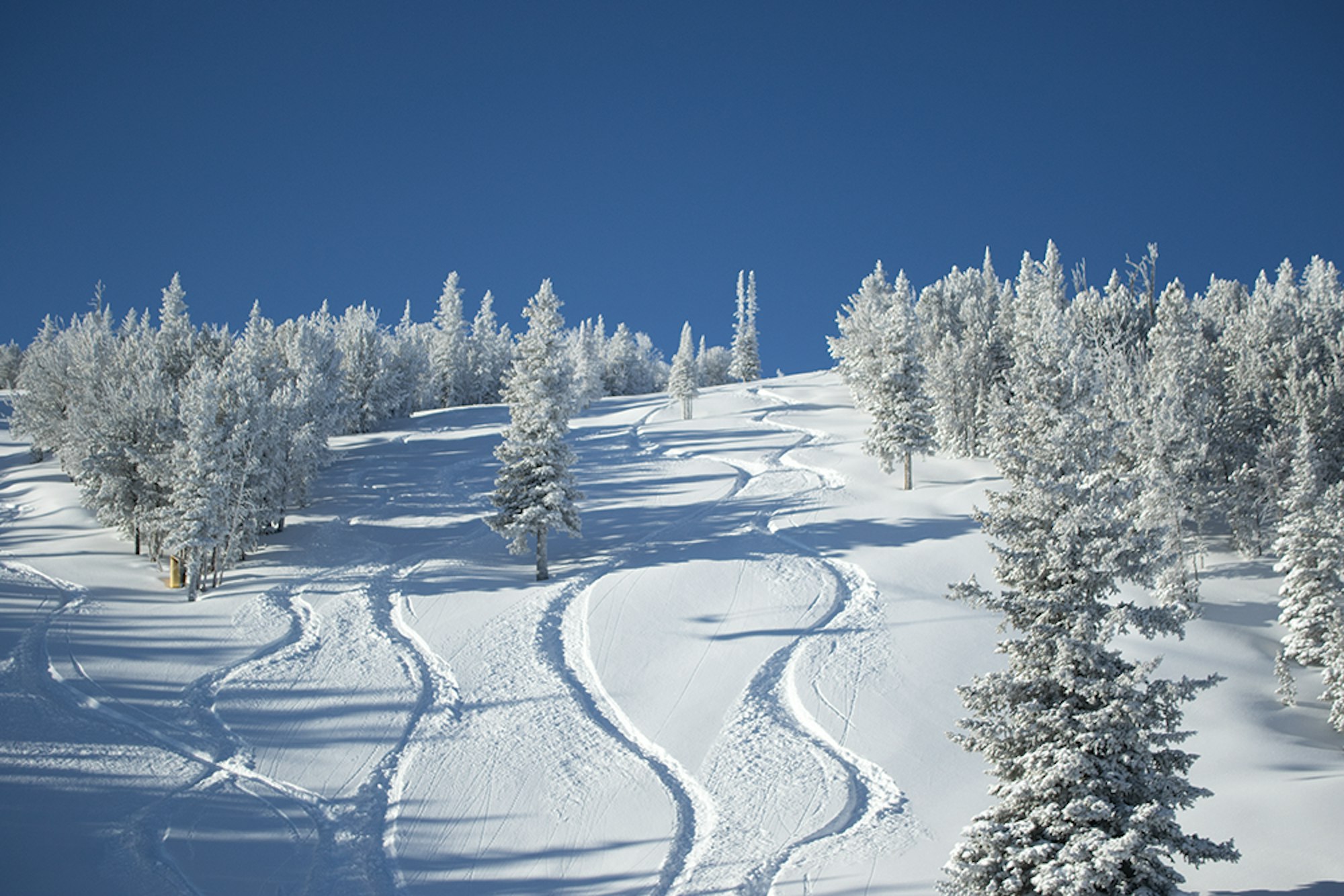
LOCATION: Red Lodge Mountain | PHOTO: courtesy of Red Lodge Mountain
This charming town and ski area knows how to put out the welcome mat, which is evident as soon as you roll through the appealing downtown dotted with eateries and locally-owned businesses. The crown jewel of the town is the venerable Pollard Hotel, offering full service, historic charm and the highly recommended “skillet” breakfasts that will keep you charging hard until happy hour.
A 15-minute drive above town brings you to Red Lodge Mountain, where you’ll find minimal glitz and lift tickets firmly in the double-digit territory ($69 for non-peak days). Red Lodge Mountain is known for a quality ski experience and an impressive variety of terrain, bundled up in a user-friendly experience.
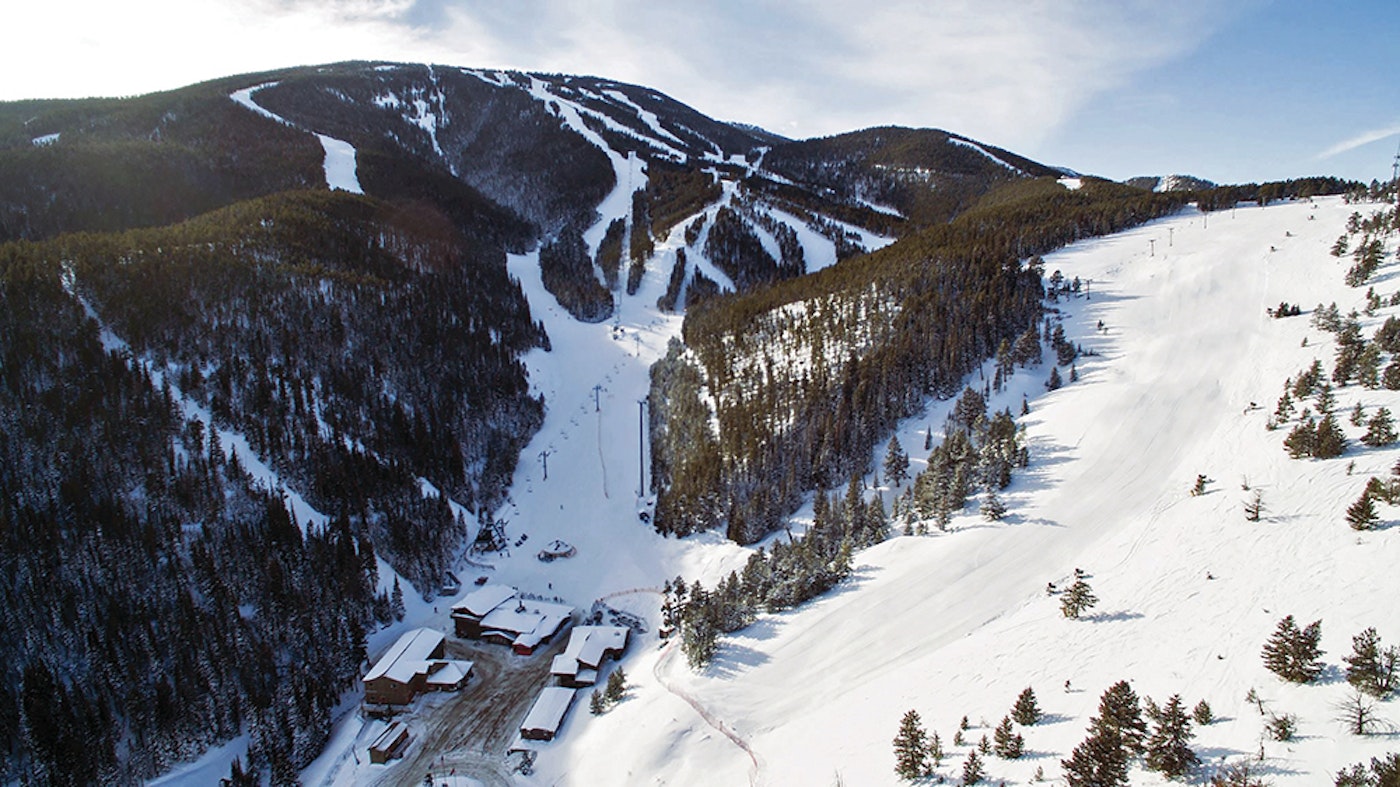
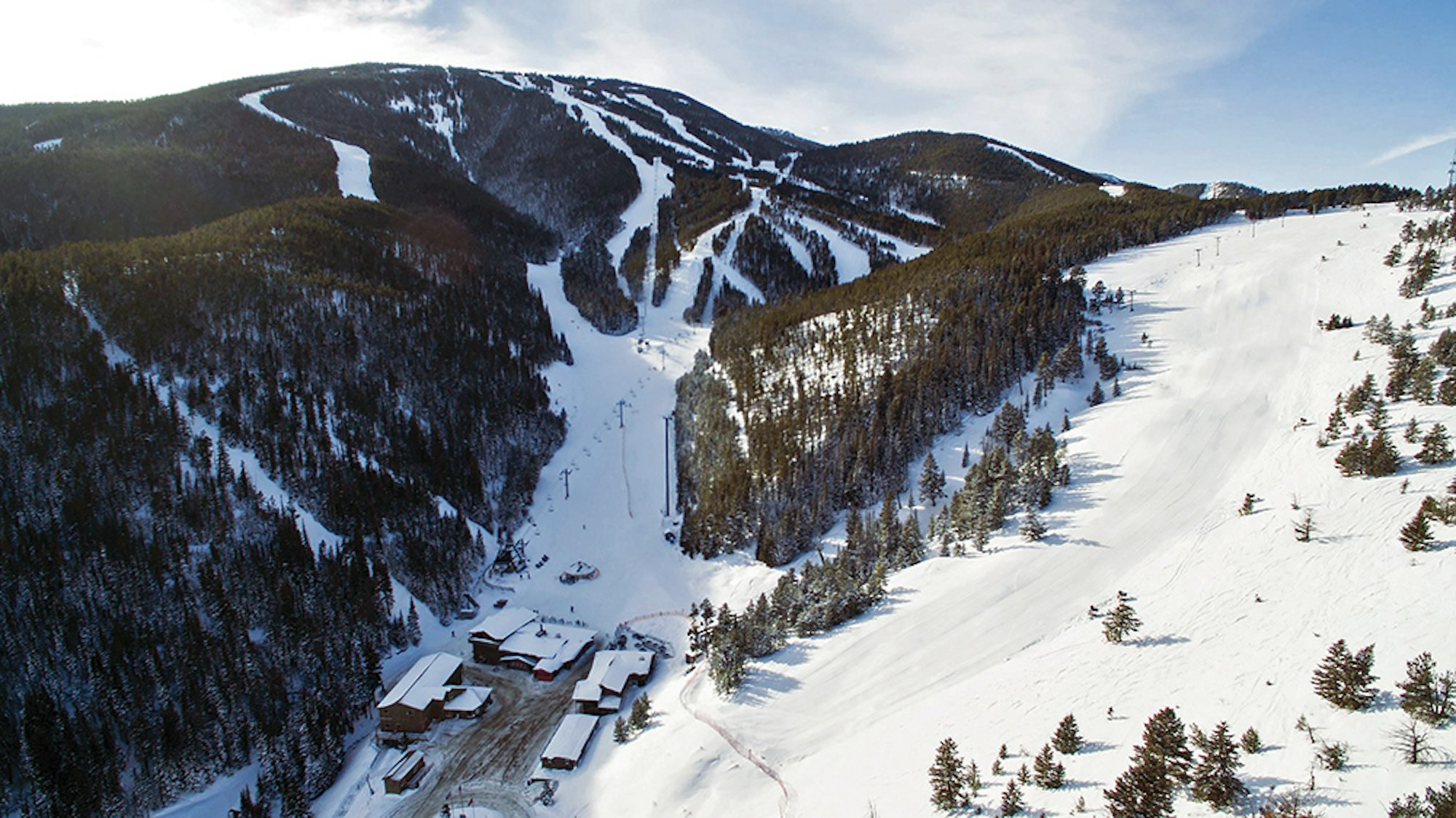
LOCATION: Red Lodge Mountain | PHOTO: courtesy of Red Lodge Mountain
Eliza Kuntz, a fixture of the Red Lodge community who worked at the mountain for 29 years, suggests warming up on Grizzly Peak’s winding groomers like Lazy M. From there, explore the newly gladed tree skiing on Grizzly Peak, or head over to Cole Creek for experts-only steeps and chutes. The Palisades area serves up “wide open groomers” crisscrossed with mogul runs and tree shots. Reflecting on the diverse terrain and the differing character of each of Red Lodge Mountain’s peaks, Kuntz sums it up easily: “It’s everything you need.”
Lost Trail Powder Mountain
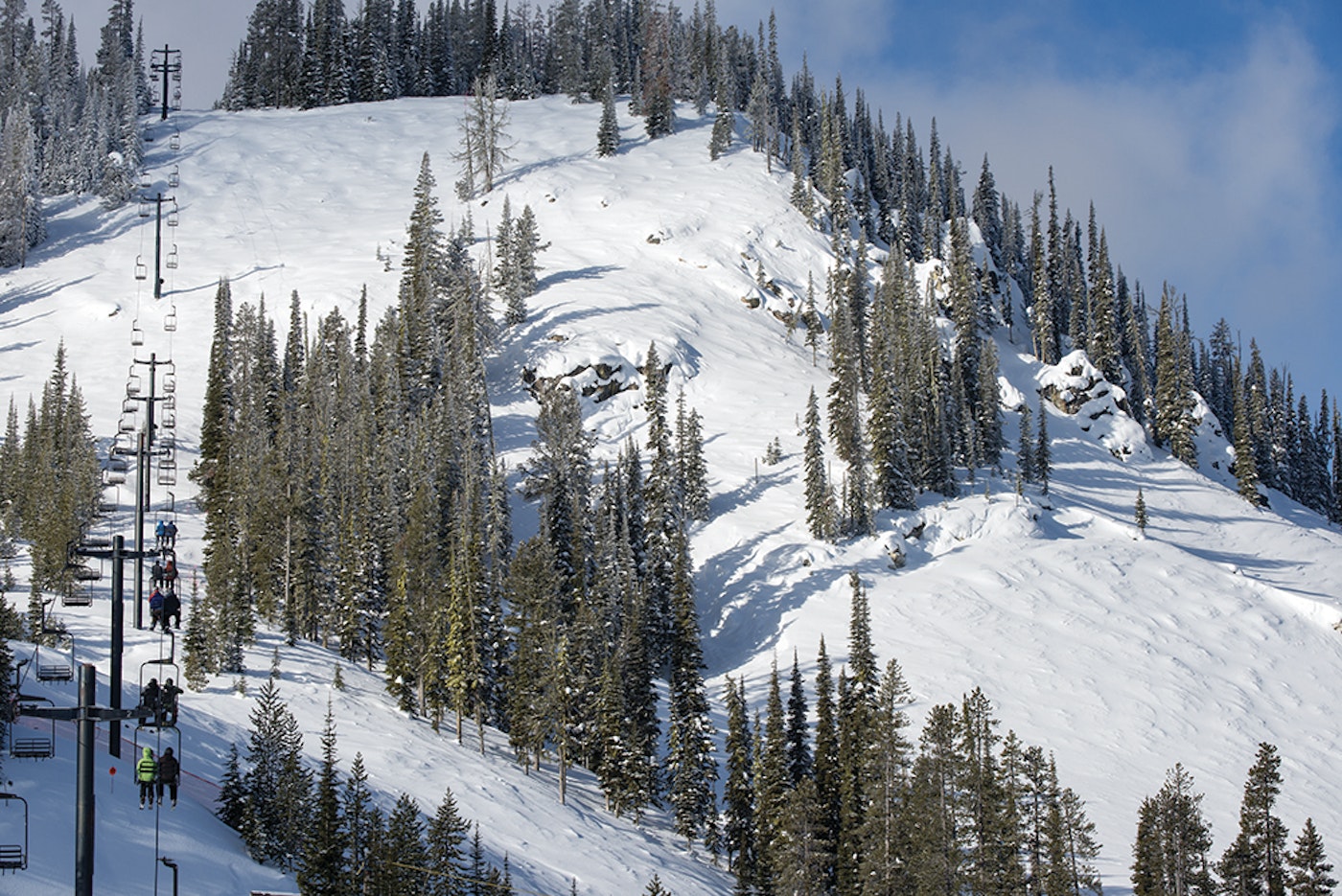
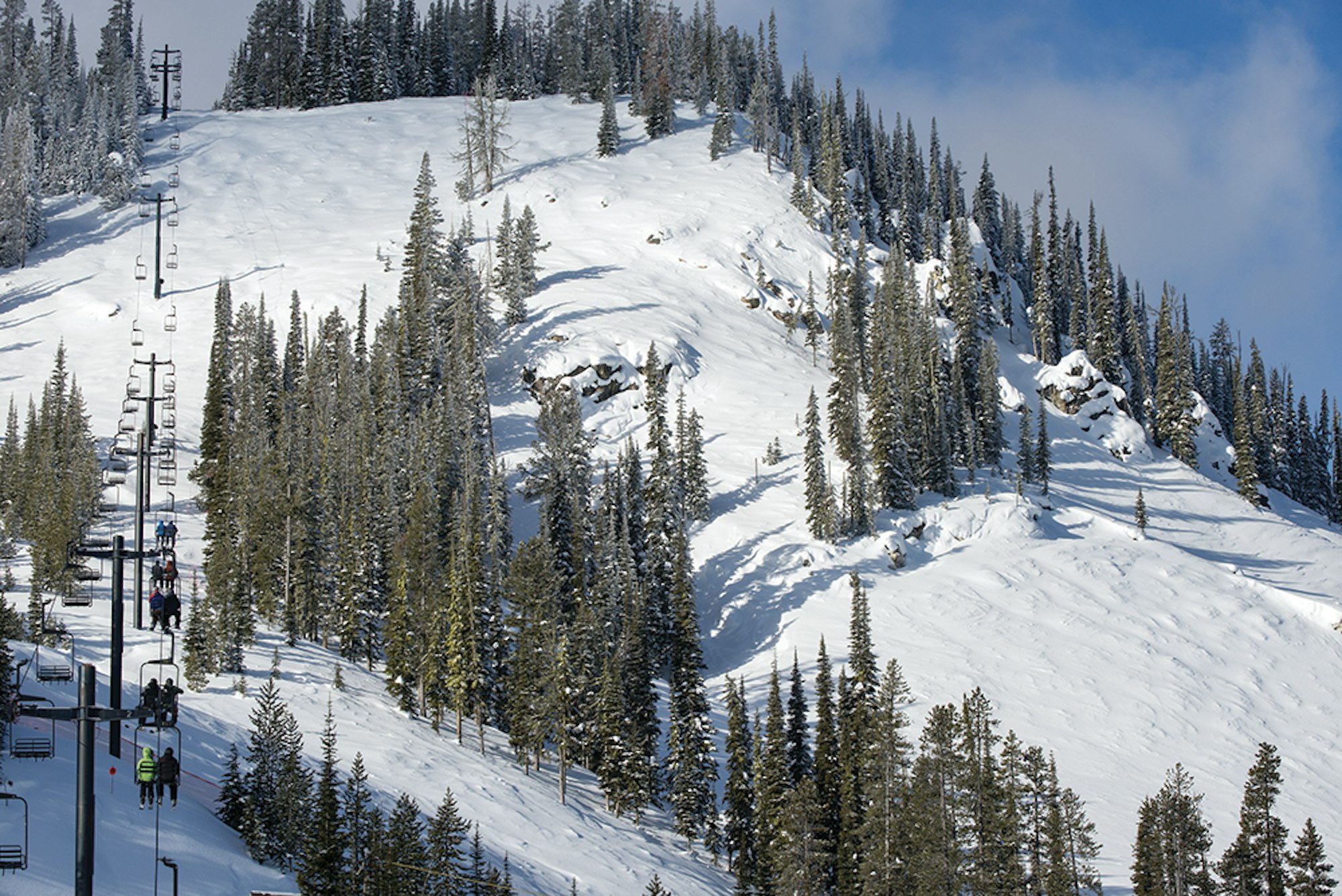
LOCATION: Lost Trail Powder Mountain
I get the feeling that Lost Trail Powder Mountain might prefer to stay lost‚ and that’s a good thing, but it’s definitely worth discovering for yourself. This gem of a ski area straddles the continental divide and wrings powder out of the sky while other ski areas remain dry, making the out-of-the-way journey to the top of US-93 well-worth the effort. Aside from holiday weeks, Lost Trail is closed Mondays through Wednesdays, so any snow that falls during that span is primed for the phenomenon known as “Powder Thursdays.” Sharon Rocks, a longtime local, explained that people tend to come down with eye infections on Thursday mornings. As in, “I just can’t see going to work today.”
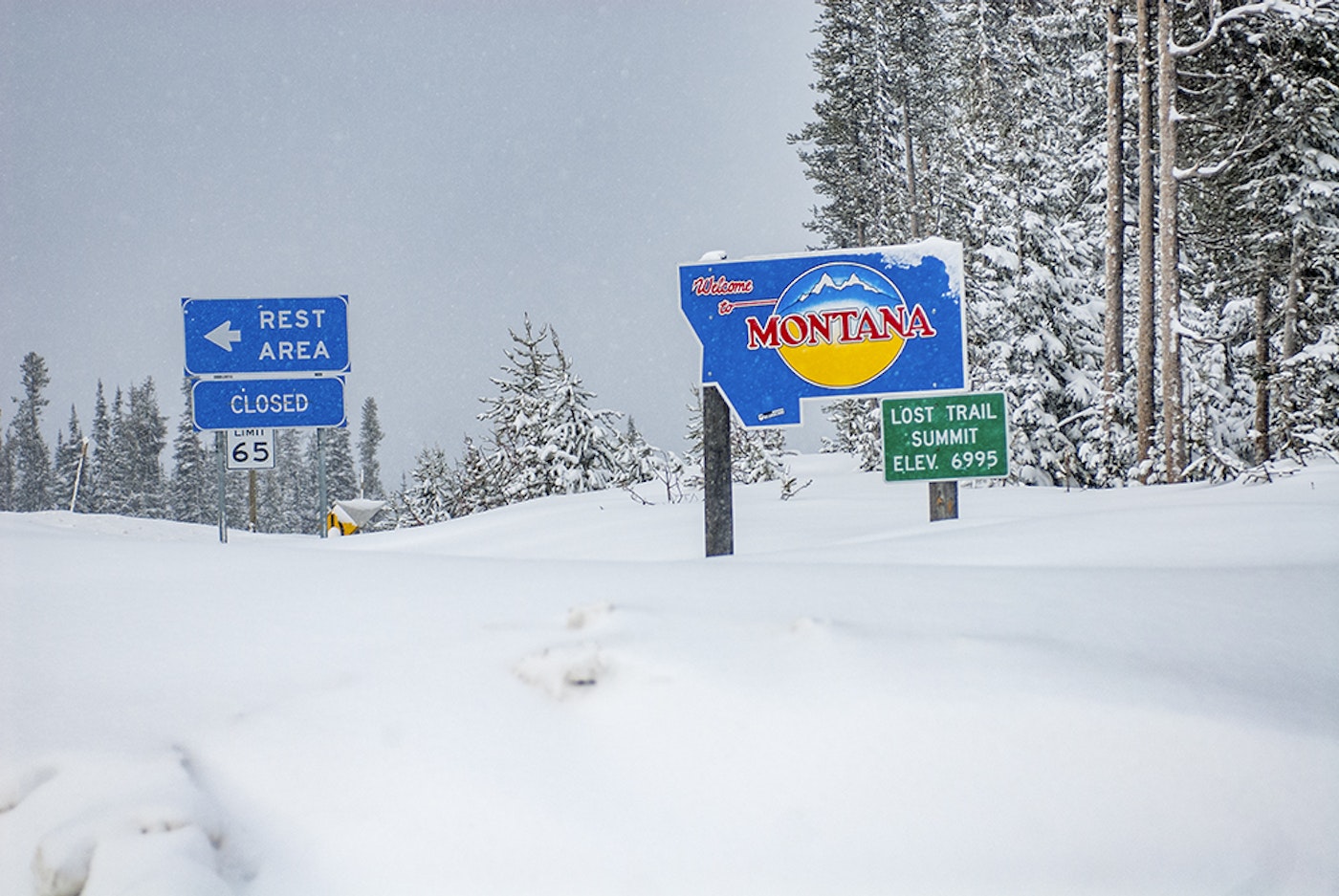

LOCATION: Lost Trail Summit, MT
Lost Trail skier John Schwartz describes his favorite part of the mountain, north of Chair 4, where low-angle, widely spaced conifers are more carefree than consequential, “like skiing through a bunch of Charlie Brown Christmas trees.”
Steeper terrain sits south of Chair 4, a mixture of open glades and tight trees, chutes and cliffs. “It’s short, but sweet,” Lost Trail local, Bryant McKinney said.
Vertigo sufferers take note: There are no safety bars on any of the five chairlifts. Lost Trail offers few amenities, with slow lifts and an unassuming lodge, but has “a local’s hometown vibe,” the skier added.
Whitefish Mountain Resort
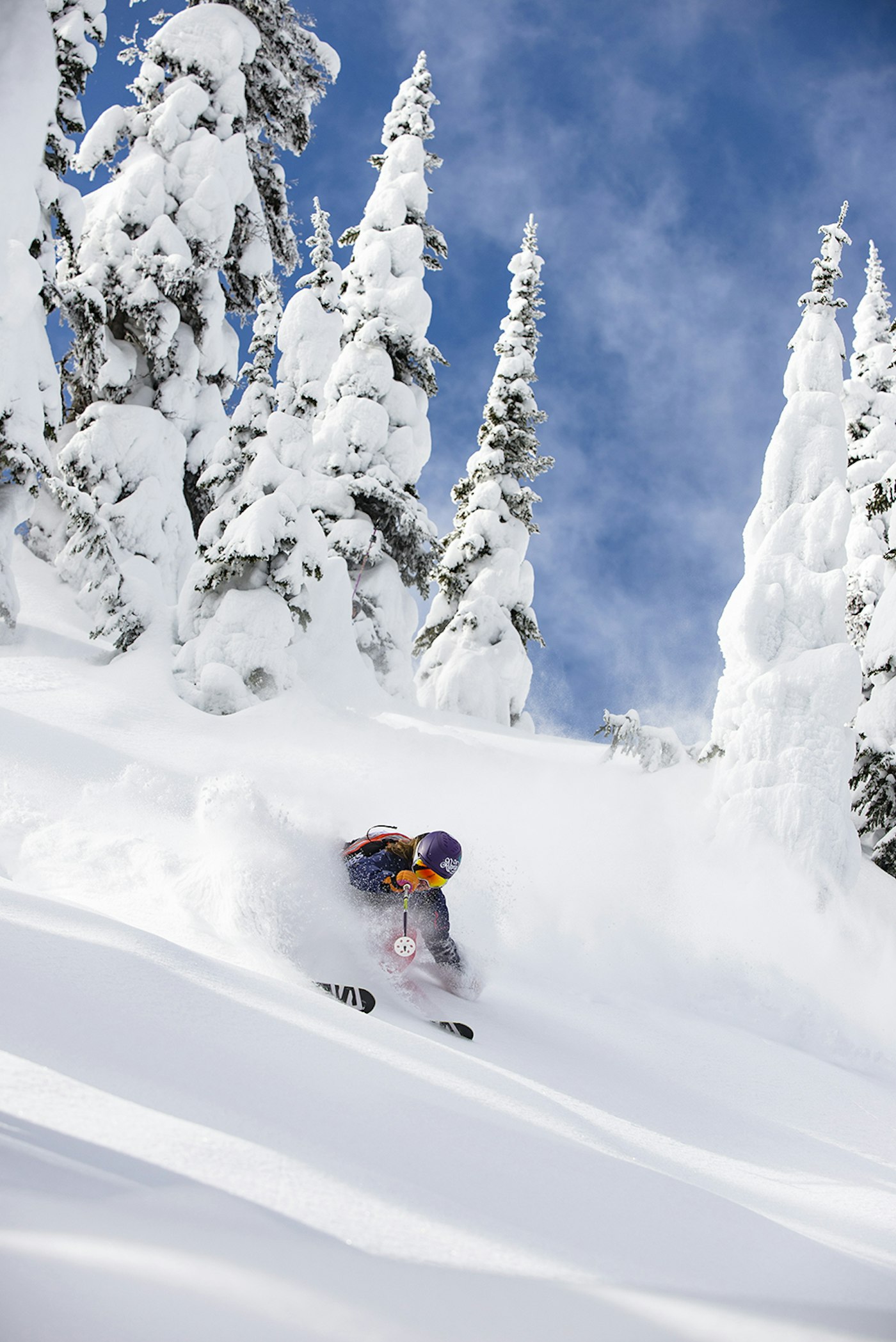
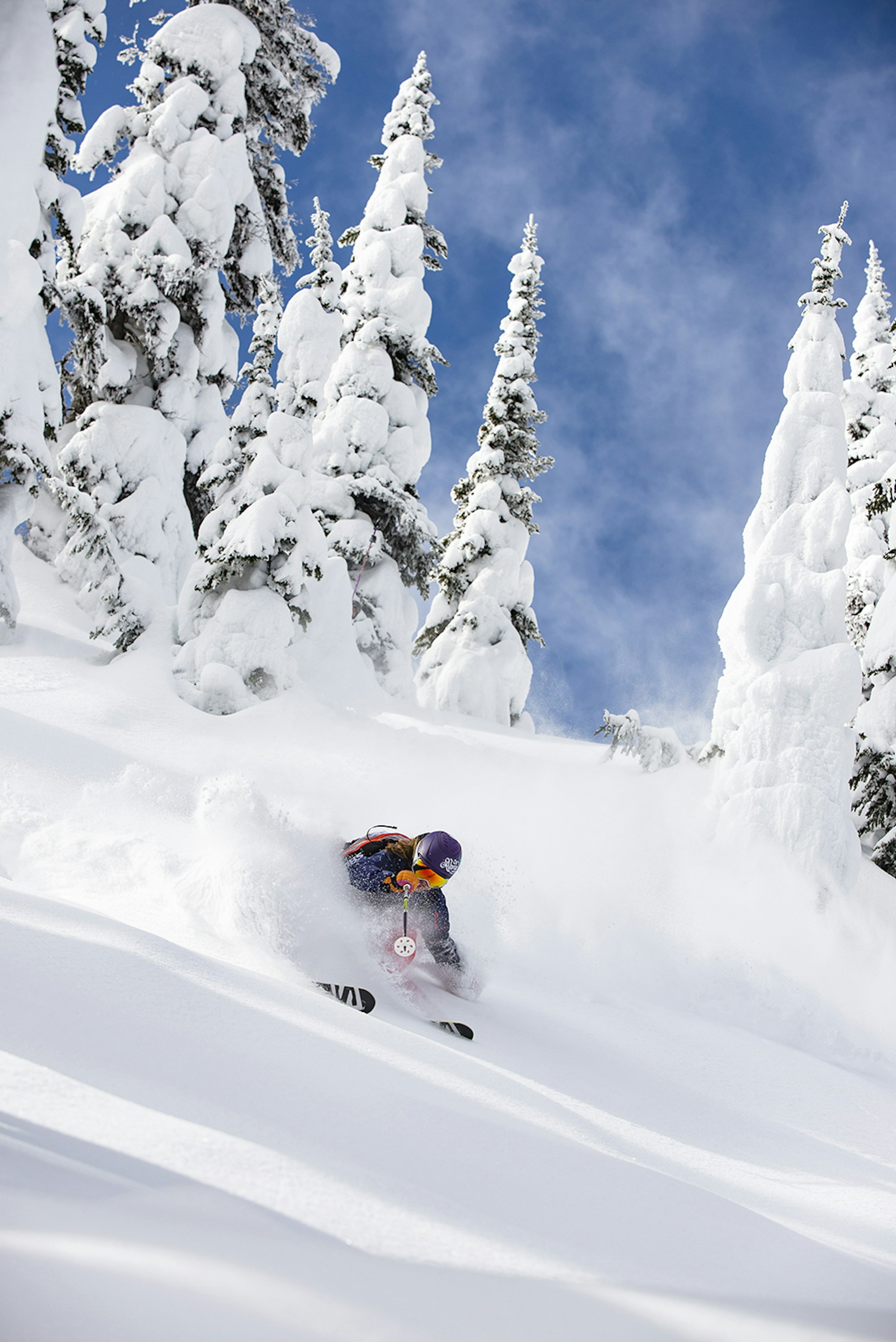
SKIER: Elyse Saugstad | LOCATION: Whitefish Mountain Resort, MT
Whitefish Mountain Resort is Montana’s second-largest ski area, spanning 2,350 vertical feet, 11 chairlifts and four terrain parks. But most important, “we have pretty awesome snow quality,” said Whitefish native Jenny Cloutier, in a tone that’s more matter-of-fact than boastful. Whitefish is in the northwest corner of the state, and has a distinctly different climate than the other resorts. The weather is wetter and milder, the forests laced with ferns and cedars and rime cloak high elevation trees, creating Whitefish’s famed snow ghosts.
Whitefish Mountain Resort has gladed runs ranging from open and flat-ish, to steep and complex. The bowl skiing on the upper mountain never disappoints and steeper chutes and gullies on the backside are an expert’s delight. Whitefish Mountain Resort is all about the skiing, and its weather patterns appeal most to those willing to hit the mountain in all conditions. “Not every day is sunny,” said Cloutier, referring to the cloud banks that commonly form over the course of the winter. In flat light, the trees are your best friends. And Cloutier quips, “in order to like our mountain, you have to like tree skiing.” But on bluebird days, the views are spectacular, stretching out across Flathead Lake and the chiseled peaks of Glacier National Park.
At the end of the day, the bustling town of Whitefish is a quick ride down the mountain on the area’s free S.N.O.W. busses. (You could drive, but why would you?) For après, Cloutier gives the nod to Abruzzo, purveyor of hand-made pastas and “really nice craft cocktails.”
This compilation just scratches the surface of Montana’s incredible skiing, as The Treasure State is home to 14 ski areas in total. Though Montana offers an appealing assortment of possibilities, the defining trait of Montana skiing is its authenticity. There’s simply no substitute for massive mountains, bountiful snow, diehard locals and challenging natural terrain you’ll spend all summer dreaming about. Some skiers prefer to keep things on the down-low, while others share the stoke with the whole world–happily, there’s no wrong way to celebrate Montana skiing.
This story originally appeared in FREESKIER 22.4, The Destination Issue.
This story was produced in partnership with Visit Montana.

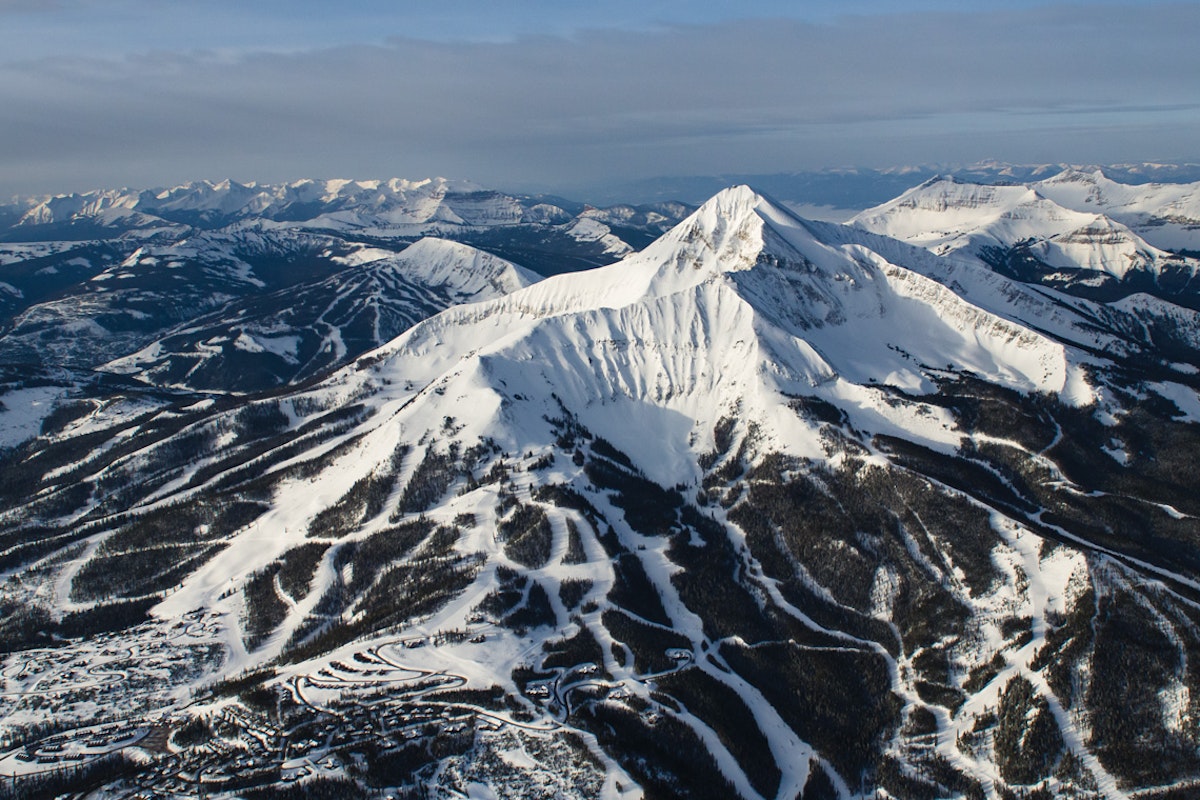

![[GIVEAWAY] Win a Head-to-Toe Ski Setup from IFSA](https://www.datocms-assets.com/163516/1765920344-ifsa.jpg?w=200&h=200&fit=crop)


![[GIVEAWAY] Win a Legendary Ski Trip with Icelantic's Road to the Rocks](https://www.datocms-assets.com/163516/1765233064-r2r26_freeskier_leaderboard1.jpg?auto=format&w=400&h=300&fit=crop&crop=faces,entropy)




![[GIVEAWAY] Win a Head-to-Toe Ski Setup from IFSA](https://www.datocms-assets.com/163516/1765920344-ifsa.jpg?auto=format&w=400&h=300&fit=crop&crop=faces,entropy)


